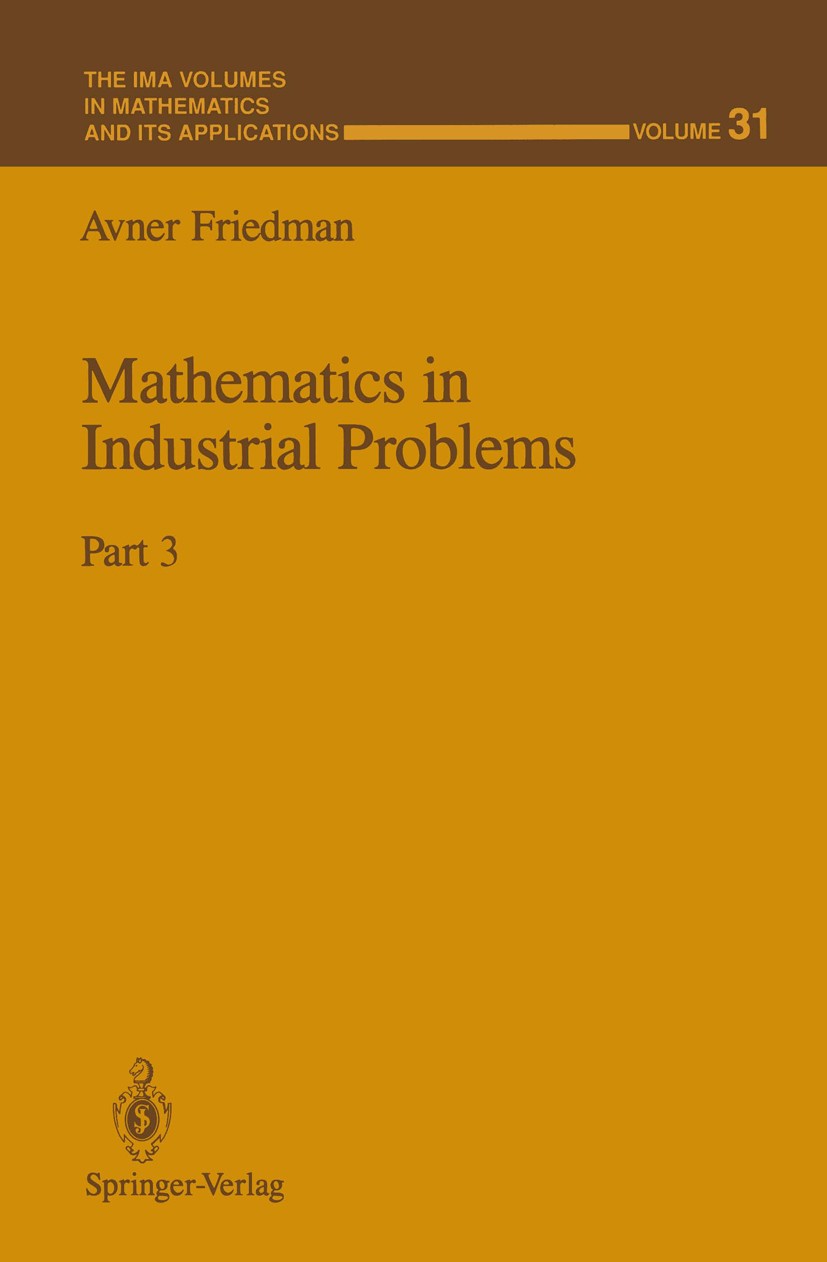| 书目名称 | Mathematics in Industrial Problems |
| 副标题 | Part 3 |
| 编辑 | Avner Friedman |
| 视频video | http://file.papertrans.cn/627/626914/626914.mp4 |
| 丛书名称 | The IMA Volumes in Mathematics and its Applications |
| 图书封面 |  |
| 描述 | This is the third volume in the series "Mathematics in Industrial Prob lems." The motivation for these volumes is to foster interaction between Industry and Mathematics at the "grass roots"; that is, at the level of spe cific problems. These problems come from Industry: they arise from models developed by the industrial scientists in ventures directed at the manufac ture of new or improved products. At the same time, these problems have the potential for mathematical challenge and novelty. To identify such problems, I have visited industries and had discussions with their scientists. Some of the scientists have subsequently presented their problems in the IMA seminar on Industrial Problems. The book is based on questions raised in the seminar and subsequent discussions. Each chapter is devoted to one of the talks and is self-contained. The chap ters usually provide references to the mathematical literature and a list of open problems which are of interest to the industrial scientists. For some problems partial solution is indicated briefly. The last chapter of the book contains a short description of solutions to some of the problems raised in the second volume, as well as refe |
| 出版日期 | Book 1990 |
| 关键词 | Diffusion; Norm; Oxidation; mathematics; model; modeling; optics; optimization; quality; technology |
| 版次 | 1 |
| doi | https://doi.org/10.1007/978-1-4613-9098-5 |
| isbn_softcover | 978-1-4613-9100-5 |
| isbn_ebook | 978-1-4613-9098-5Series ISSN 0940-6573 Series E-ISSN 2198-3224 |
| issn_series | 0940-6573 |
| copyright | Springer-Verlag New York, Inc. 1990 |
 |Archiver|手机版|小黑屋|
派博传思国际
( 京公网安备110108008328)
GMT+8, 2025-12-29 02:28
|Archiver|手机版|小黑屋|
派博传思国际
( 京公网安备110108008328)
GMT+8, 2025-12-29 02:28


